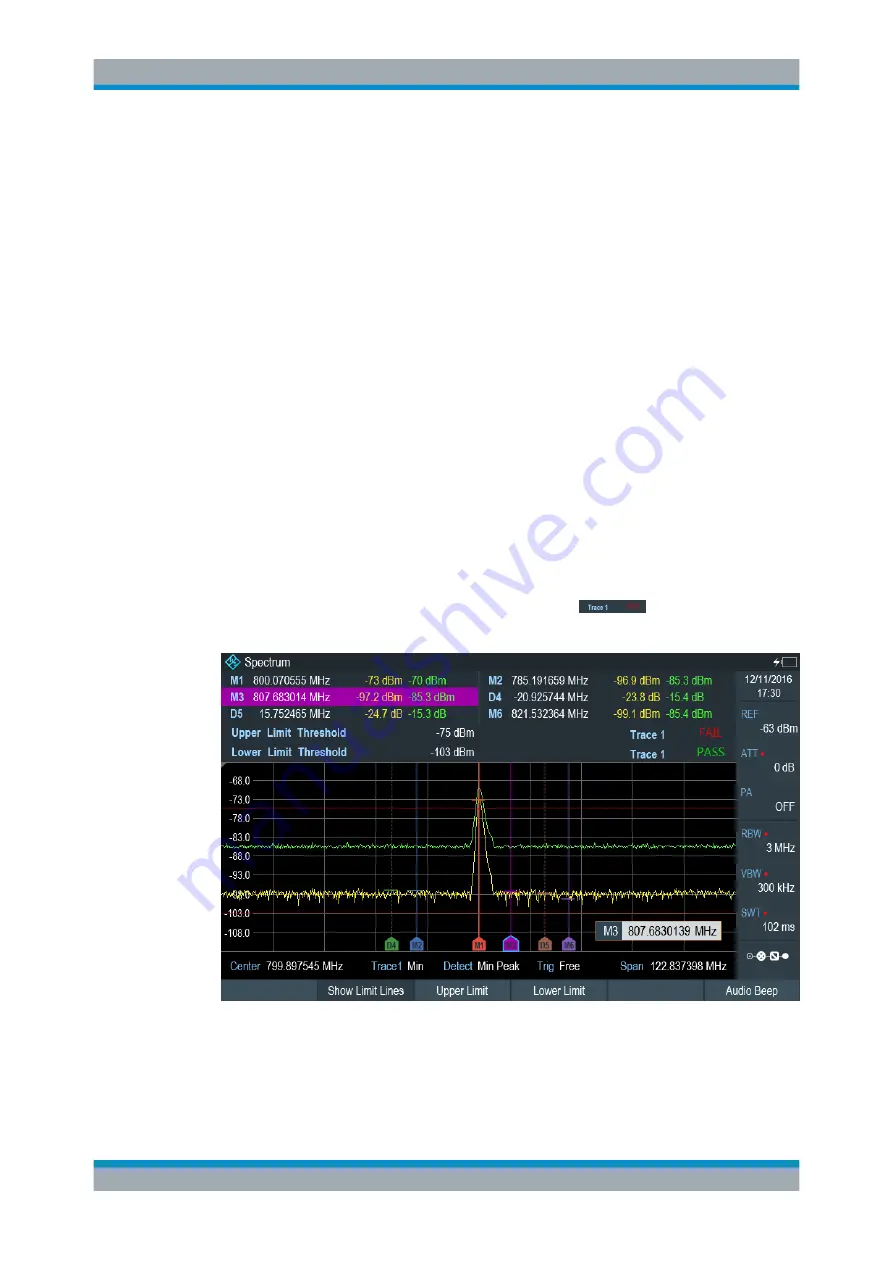
Spectrum Analyzer Mode
R&S
®
Spectrum Rider FPH
193
User Manual 1321.1011.02 ─ 06.00
6.2.8
Using Limit Lines
Limit lines help you to identify if a signal complies with certain level characteristics.
A limit line is made up out of two or more points that are connected to a line. Each of
the points that define the shape of the limit line consists of two coordinates. One coor-
dinate defines the horizontal position (e.g. frequency), the other one the vertical posi-
tion. With the R&S Spectrum Rider, you can build limit lines that consist of up to 1000
points.
Values that define the horizontal characteristics of the limit line can be either absolute
values (e.g. frequency in MHz) or relative values whose reference is the center of the
measurement trace (e.g. the center frequency). Relative values are of advantage if
you, for example, measure modulated output signals and you change the center fre-
quency but need the limit line to remain the same. Absolute limit lines have the file
extension ".abslim" while relative limit lines have the file extension ".rellim"
Values that define the vertical characteristics are always level values in dB. If the scal-
ing of the vertical axis is currently a linear one (units V or W), the R&S Spectrum Rider
automatically switches to a logarithmic scaling after you turn on the limit line.
After turning on a limit line, the R&S Spectrum Rider checks if the signal violates the
shape of the limit line. If one or more signal levels exceed the limit value, the R&S
Spectrum Rider features several indicators that the limit check has failed.
●
A general message in the diagram header that indicates if the signal violates the
limit line, including the trace that violates the limit:
●
An audio signal that sounds every time a limit is violated
Figure 6-13: Upper and lower Limit Lines
You can create and edit limit lines with the R&S InstrumentView software and then
transfer them into the internal memory of the R&S Spectrum Rider. The number of limit
Configuring Spectrum Measurements






























